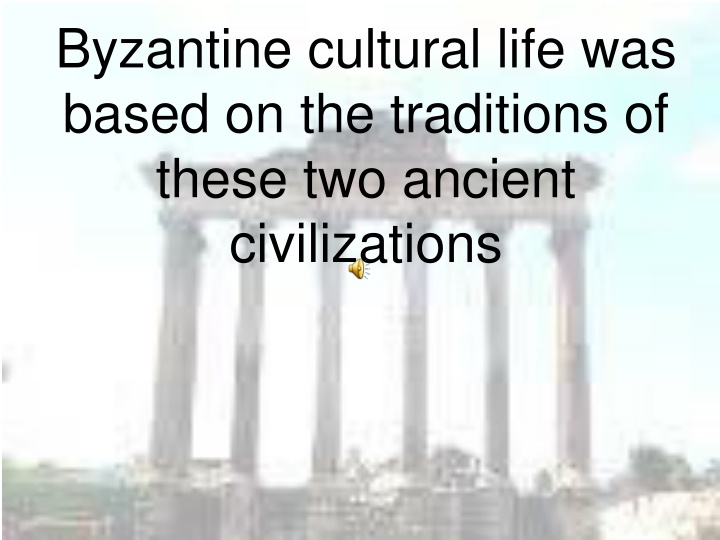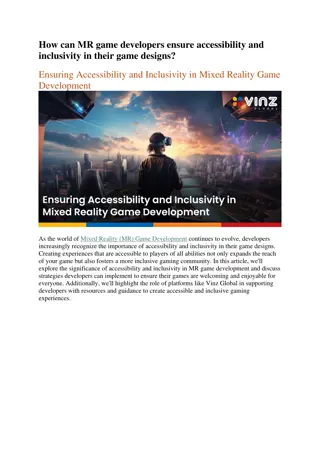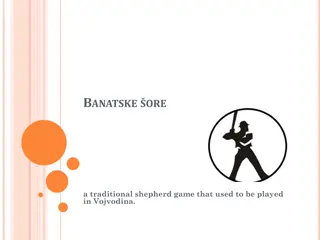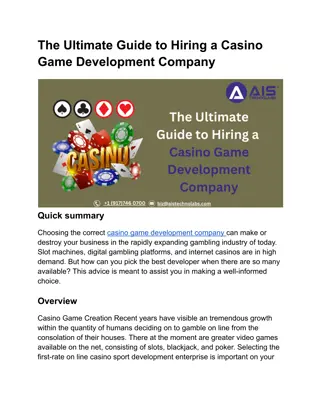
Byzantine Cultural Life and Traditions: A Glance into Ancient Civilizations
Delve into the vibrant cultural life of the Byzantine Empire, rooted in the ancient traditions of two civilizations. Explore the primary exports, artistic strengths, social classes, and unique aspects of Byzantine governance. Uncover the challenges faced by the empire from external threats and internal dynamics, and its lasting legacy on art, architecture, and culture in Constantinople, Russia, and the Balkans.
Download Presentation

Please find below an Image/Link to download the presentation.
The content on the website is provided AS IS for your information and personal use only. It may not be sold, licensed, or shared on other websites without obtaining consent from the author. If you encounter any issues during the download, it is possible that the publisher has removed the file from their server.
You are allowed to download the files provided on this website for personal or commercial use, subject to the condition that they are used lawfully. All files are the property of their respective owners.
The content on the website is provided AS IS for your information and personal use only. It may not be sold, licensed, or shared on other websites without obtaining consent from the author.
E N D
Presentation Transcript
Byzantine cultural life was based on the traditions of these two ancient civilizations
The primary exports in the Byzantine Empire were cloth, carpets & this
Colored mosaics, painted icons & these were strengths of Byzantine culture
This class was large & wealthy but was less powerful than the bureaucracy
The Byzantine bureaucracy was like this country s because it was open to talented commoners
The Byzantine government recruited troops by giving them this in return for military service
After the seventh century, this group threatened the Byzantine Empire
Merchants from this city rerouted crusaders to attack Constantinople during the 4thCrusade
This city was the only major urban area & economic center during the Byzantine era
Constantine moved the eastern capital in this century to protect the richest part of the Roman Empire
This empire lasted a thousand years, estab a cultural center in Constantinople, & spread culture to Russia & the Balkans
The Byzantine empire began with the estab of this city
The result of this rulers wars were more taxes, reconquest of N Africa & Italy, estab of a cultural center & a weaker defense in the East
The result of war with Arab Muslims was higher taxes & a loss of land for this group
The Byzantine bureaucracy employed eunuchs, was influence by aristocrats & hired lots of these to make sure ppl were loyal
Russians were converted by their ruler to this type of Christianity
This regions religious, cultural, social & economic patterns developed separately from Western Europe
The invasion of this group did not threaten the Russian nobility or the Eastern Orthodox faith
This Christian church was controlled by the state. It outlawed icons, then gradually restored their use
Vladimir I feared this in Roman Catholicism and chose Eastern Orthodox instead
Bread and this were the major issues in the disagreement between E and W when the churches split in 1054
Both Eastern & Western Europe replaced animism with monotheism, had a Greco Roman past & spread this faith
The Russian Orthodox Church adopted the use of Greek & Slavic languages, monasticism & the veneration of these
Form of Christianity that emerged in the Byzantine Empire & has different organization & culture than the Roman church is called this






















